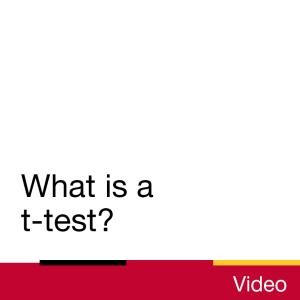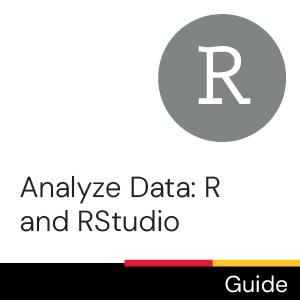Time commitment
Less than 2 minutes
Description
This video will explain what an ANOVA is, and in what situations you should use an ANOVA over a t-test.
Video
Transcript
What is an ANOVA?
An ANOVA is an analysis of variance. It is an extension of a t-test.
While a t-test determines if two groups means are significantly different, an ANOVA allows you to determine if significant differences exists between two or more group means.
For example, you can compare mean test scores of students in private and public schools as well as students that are homeschooled.
An ANOVA assumes your data follows a normal distribution and that the variation within the groups of interest are equal.
For an ANOVA, there is a null and alternative hypotheses.
The null hypothesis states there is no difference between the group means.
For example, no difference exists in the mean test scores between children studying at home, or at a private or public school.
The alternative hypothesis states there is a difference in the mean test scores between the three school systems.
The value resulting from an ANOVA is a p-value and it tells us how likely the difference between the groups could have happened by accident.
If the p-value is less than 0.05 then we know a statistically significant difference exists between groups.
But, we do not know which groups are statistically different from each other.
For example, when comparing the mean test scores between the 3 school systems, a significant p-value will indicate the mean test scores between the school systems are statistically different but, not whether groups are statistically different from each other.
In this case, a post-hoc test is used. Post-hoc is Latin for “after this” or “after the event”.
It is a test you would run after you’ve completed an ANOVA with a significant p-value.
Post-hoc tests are used to determine where the differences occurred between groups.
For example, the post hoc will test if a significant difference exists between private and public school students, public and home-schooled, and private and home-schooled.
Remember: Performing an ANOVA is best practice when you have two or more groups of data rather than running individual t-tests for each group comparison right away.
The library provides access to software that will enable you to run an ANOVA. These include R, SPSS, and SAS.
Need help? Email library@uoguelph.ca, chat or drop by!
License

This work is licensed under a Creative Commons Attribution-NonCommercial-ShareAlike 4.0 International License.
Recommended
- Ask Chat is a collaborative service
- Ask Us Online Chat hours
- Contact Us

